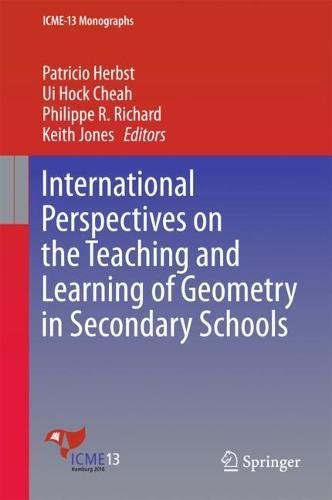

Most ebook files are in PDF format, so you can easily read them using various software such as Foxit Reader or directly on the Google Chrome browser.
Some ebook files are released by publishers in other formats such as .awz, .mobi, .epub, .fb2, etc. You may need to install specific software to read these formats on mobile/PC, such as Calibre.
Please read the tutorial at this link: https://ebookbell.com/faq
We offer FREE conversion to the popular formats you request; however, this may take some time. Therefore, right after payment, please email us, and we will try to provide the service as quickly as possible.
For some exceptional file formats or broken links (if any), please refrain from opening any disputes. Instead, email us first, and we will try to assist within a maximum of 6 hours.
EbookBell Team

4.4
92 reviewsThis book presents current perspectives on theoretical and empirical issues related to the teaching and learning of geometry at secondary schools. It contains chapters contributing to three main areas. A first set of chapters examines mathematical, epistemological, and curricular perspectives. A second set of chapters presents studies on geometry instruction and teacher knowledge, and a third set of chapters offers studies on geometry thinking and learning. Specific research topics addressed also include teaching practice, learning trajectories, learning difficulties, technological resources, instructional design, assessments, textbook analyses, and teacher education in geometry.
Geometry remains an essential and critical topic in school mathematics. As they learn geometry, students develop essential mathematical thinking and visualization skills and learn a language that helps them relate to and interact with the physical world. Geometry has traditionally been included as a subject of study in secondary mathematics curricula, but it has also featured as a resource in out-of-school problem solving, and has been connected to various human activities such as sports, games, and artwork. Furthermore, geometry often plays a role in teacher preparation, undergraduate mathematics, and at the workplace. New technologies, including dynamic geometry software, computer-assisted design software, and geometric positioning systems, have provided more resources for teachers to design environments and tasks in which students can learn and use geometry. In this context, research on the teaching and learning of geometry will continue to be a key element on the research agendas of mathematics educators, as researchers continue to look for ways to enhance student learning and to understand student thinking and teachers’ decision making.